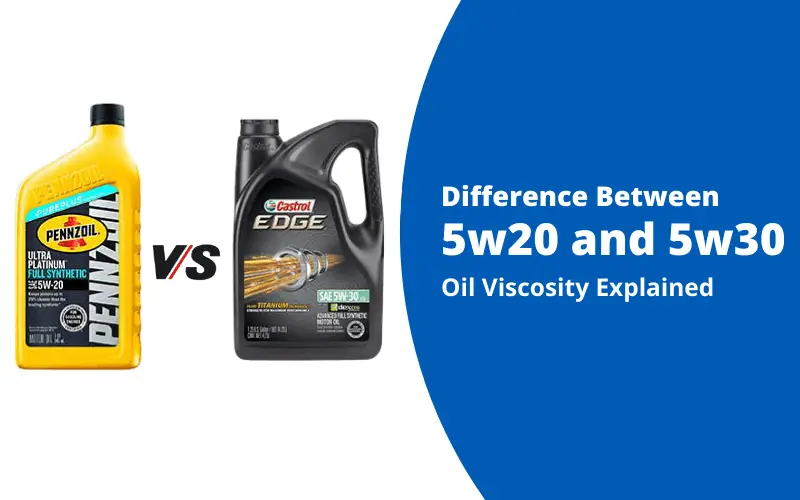Can I use 5w30 instead of 5w20? Some people ask the question after accidentally mixing the two. And they wonder whether the engine would be okay.
To answer the question, I have researched and described the difference between 5w20 and 5w30 below. It will help you understand the oil ratings, and clear up any misconception.
Difference Between 5w20 and 5w30
Newbies can get confused as they don’t know what those numbers mean. So, let’s shine some light on the matter and know whether they are interchangeable or not.
Those numbers indicate the viscosity rating of engine oil. Here, viscosity is the thickness of oil where higher numbers mean thicker oils. Too thin or too thick oil won’t let the engine run efficiently or even start. So, manufacturers test their engines and declare the compatible rating number in the user manual.
You have noticed that there are two different numbers besides ‘w’. The number that shows the oil’s viscosity in the winter is placed on the left. On the other side, it shows the thickness in higher temperatures.
5w20 and 5w30 have the same winter or cold weather rating which is 5. But the higher temperature rating is slightly different. The one with the value 20 runs thinner than the 30 rated ones.
The thinner viscosity of 5w20 ensures less drag throughout the engine parts. That includes pistons, valve train, and crankshaft. As a result, you can get better mileage.
On the other hand, 5w30 acts as a thicker oil and allows the engine to operate in the higher temperature ranges. Because of its more thickness, it can work against heat, and not break down easily. As a result, this oil can ensure better protection for the engine parts.
Can I Use 5w30 Instead Of 5w20?
Yes, you can use 5e30 as an alternative to 5w20 without having major issues. The only difference you might notice is slightly less mileage. However, it is so little that you won’t notice the change.
Due to the similarity in the viscosity rating, you won’t face any issue driving in colder regions. But it is better to use 5w30 in warmer regions and not the other way around. However, if your car’s manual says that it is compatible with a 5w20 full synthetic oil, you should buy something accordingly.
I have researched some more and gathered a few facts about both types. Based on those facts, you will understand which one would work better for your car.
Which Is Better 5w20 or 5w30?
Depending on the region you live in, the answer depends. Let’s talk about 5w20 first.
Besides the better fuel economy, it also helps the oil pump reach the oil to the engine easily. Compared to the other one, 5w20’s runnier nature is better if you are driving in a cold region.
Regarding 5w30, the experts recommend it more often due to its wide range of compatibility, and protection against heat. About the other benefit, it effectively works with a diverse selection of vehicles regardless of engine types. Those who live in a warmer region or when you are driving in the summer must choose this oil over the other one.
Now, you know which one to get for your engine. It is not necessary to go to a physical shop because you can get the same products from Amazon. Here, check out the best 5w20 synthetic oils as well as the best 5w30 synthetic oils.
I recommend you to order a reputed brand’s oil after reading the reviews. But don’t choose one that is way out of its league. For example, you can’t pour 20w50 instead of 5w20 synthetic oil.
Conclusion
I hope that the difference between 5w20 and 5w30 is clear to you. The best practice is to use only the oil that your vehicle’s manufacturer recommends.
But if you ever need to interchange the viscosity ratings, you can do so as the synthetic oils are flexible. Always consult with your vehicle’s manufacturer or your mechanic when you are not sure.
More to explore:

